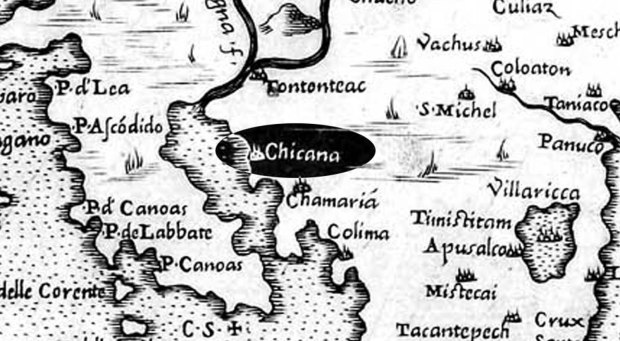How old is the word “Chicana?”
[ Kurly Tlapoyawa ]
The origin and antiquity of the words “Chicana” and “Chicano” has been debated from the halls of academia to the streets of the barrio. The advent of social media has certainly added fuel to the fire, but nobody seems to have a clear answer. Some claim that the word comes from “chicanery,” and is reflective of the untrustworthy nature of the people it describes. Others claim that it means “children of the earth” in the Nawatl language. However, neither of these claims is supported by evidence. As far as I can tell, Chicano and Chicana are simply truncated forms of the word Mexicano. This would, of course, indicate that the words have a Nawatl origin.
So just how old is the word “Chicana?” I have seen individuals claim to have found the “earliest” appearance of Chicano or Chicana dating to the 1940s, 1920s and even the late 1800s. In an embarrassingly misinformed piece written in 2014, notorious non-Chicano Ilan Stavans claims that the earliest appearance of the word was in 1947. This claim was thoroughly debunked by Dr. Ruben Arellano in his piece “Ilan Stavans has a Chicano Problem,” written for this website. As Dr. Arellano notes: “Had he dug a little deeper, Stavans would have discovered that in fact, the earliest known example of the term Chicano in print (in the United States) was in 1926, by a former immigrant laborer turned writer, Daniel Venegas. So much for research.”
But what about the earliest appearance of the words “Chicana” or “Chicano” outside of the United States? As fate would have it, both Dr. Arellano and I share a passion for this particular subject, leading us to independently make a remarkable discovery. In our research we came across a set of maps from the 1500s, each showing a location marked “Chicana” in what is now western Mexico.
The first of these maps is the “Desegno del Discoperto Della Nova Franza,” Venice, 1566, by Bolognino Zaltieri (below).

Desegno del Discoperto Della Nova Franza, 1566
Next we have the “Diego Gutierrez Map” of 1562. Note the same location for “Chicana.” This suggests that the Gutierrez map was used as the source for the 1566 map.

Diego Guiterrez Map, 1562
So what does this mean? Well, without getting into etymologies, ethnic identities, and word origins, it means that the word “Chicana” appears in print at least as far back as 1562! I don’t know about you, but I find this fact fascinating. Why this is not common knowledge in the field of Chicano Studies remains a mystery to me, but I better leave an examination of the utter failure that is Chicano Studies for a different time. Suffice it to say, “Chicana” is truly an old school term. Remember that the next time someone tries to shoehorn an “x” onto the end of it.
Que viva la Chicana!
Interested in learning more? Check out my book “Our Slippery Earth: Nawa Philosophy in the Modern Age” available on Amazon.com. In it, I discuss basic themes of Nawa philosophy, and how these themes can be practiced in the modern age.
Kurly Tlapoyawa is an archaeologist, author, and ethnohistorian. His research focuses primarily on the interaction between Mesoamerica, Western Mexico, and the American Southwest. Kurly has lectured at UNLV, University of Houston, and Yale University on topics related to Mesoamerica. His recent book, “Our Slippery Earth: Nawa Philosophy in the Modern Age” was published in 2017. In addition to his work in Archaeology and Ethnohistory, Kurly is a professional stuntman with over 35 credits to his name.
Follow Kurly on twitter @KurlyTlapoyawa
Enjoy this article? Become a patron and support independent, Indigenous media!
![[ mexika.org ]](https://mexika.org/wp-content/uploads/2016/12/top.jpg)


Leave a comment